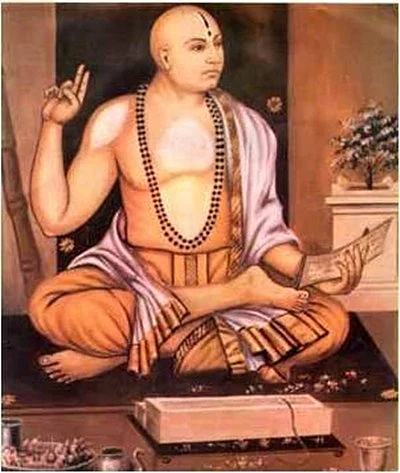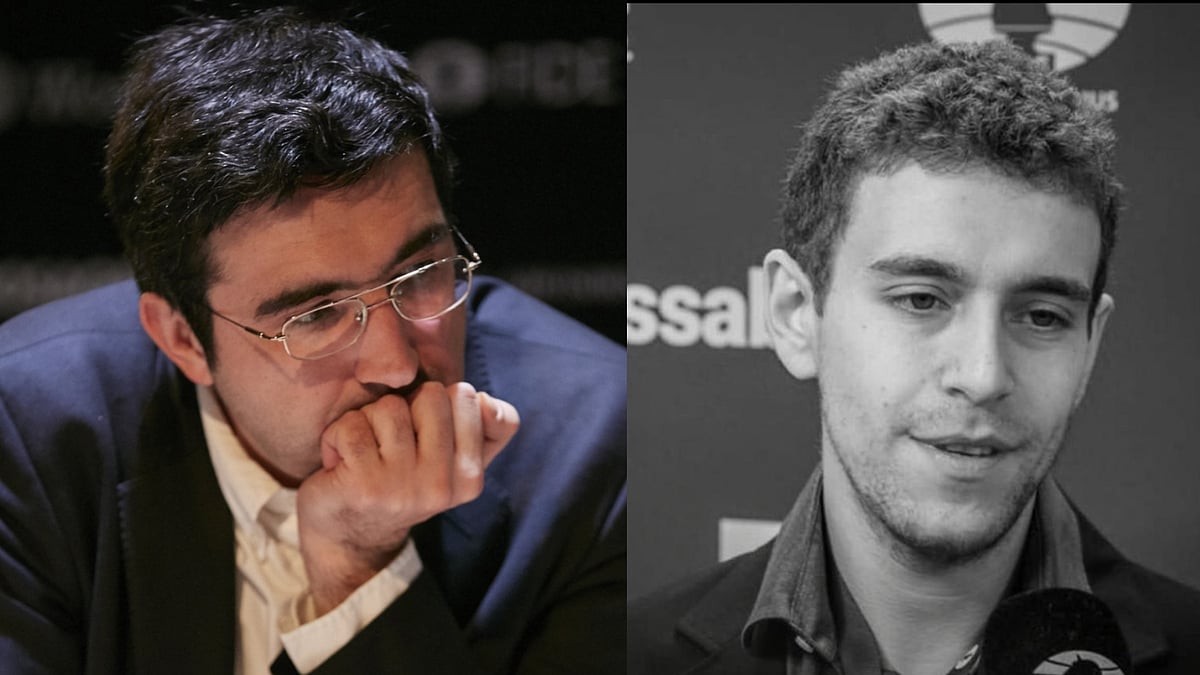Having intuitively felt that he had finished his work, Madhvacharya is said to have mysteriously disappeared from his seat, while teaching the Attareya Upanishad to his disciples, leaving a big heap of flowers on it, writes MEERA S. SASHITAL.
Among the three jewels of Vedanta viz Shankaracharya, Ramanuja, Sri Madhvacharya could be treated as the third philosopher who introduced a balance between these two extreme positions in Indian philosophy viz. Advaita and Vishishtadvaita. The most authentic source of his life is the famous work Madhvavijaya in Sanskrit by Narayana Pandita (A.D. 1287-1350) who was a junior contemporary of Acharya himself. He was an Advaitin first, but was converted to Dvaitism by Madhvacharya.
Sri Madhvacharya was born in the year 1238 A.D. on the Vijaydashmi day of the month of Aswayuja in a village about 3 miles from Udupi in South Canara. His father was Madhyageha Bhatta a pious Brahmin belonging to Bhagvata Sampradaya and a pauranic by profession. He was named ‘Vasudeva’ during the namakarana ceremony. According to the dvaita tradition, Madhva was an incarnation of Mukhyaprana (same as Hiranyagarbha, also known as Vayu and Sutratman, an emanation of Lord Vishnu).
Vasudeva was very precocious and his father taught him the three Rs in the privacy of his house. Even as a child he exhibited many miraculous powers like clinging to the tail of a bull grazing in fields for several hours, converting tamarind seeds into gold and clearing the debts of his father, spending several days in the Narayan temple in the forest all alone, and correcting a Brahman pundit who was reciting the puranas wrongly and so on.
Not even had Vasudeva attained his teens when he had the urge to take the holy orders and took sanyasa diksa

(monastic vows) from Achutapreksha, the pontiff of a monastery at Kare near the modern town of Udupi. He was given the new name ‘Purnaprajna’. Achutpreksha was brought up in the then current Advaita Vedanta school of thought according to the famous work Istasidddhi of Vimuktatman (10th century AD). However, the philosophy of this school did not appeal to the new Sanyasi.
Achutpreksha though displeased with the mutual differences was impressed with the earnestness, sharp memory and remarkable scholarship of his disciple gave him another name ‘Anandatirtha’ and also made him the pontiff of his monastery. ‘Madhva or Madhvacharya’ seems to be a synonym of his real name. However, it is by this name that he is more commonly and popularly known.
Madhva began to preach his own philosophy according to which the world is real, the individual souls are different from Brahman, and Vishnu is the highest entity in the Universe. Madhvacharya advocated dualism and realism. His philosophy accepts panchabhedas or five kinds of bhedas (differences) which are real and permanent. They are: Isvara or God is different from the jivas or souls; he is also different from the jada (insentient nature, prakrti); the various jivas are different from one another; the jivas are different from the jada; the various objects which are jada, are also different from one another. He accepts God, called Narayana or Vishnu or Srihari, as the Supreme Reality and the others as dependent realities. Mukti or liberation, which is regaining one’s blissful nature can be got only through bhakti or devotion to God.
Many scholars of other schools of philosophy debated with Madhvacharya but were defeated by him and converted to his own views. To propagate his faith, he undertook a pilgrimage to various shrines in South India and also utilized this opportunity for spreading his views on the basic texts of Vedanta. Immediately after his return from pilgrimage, he wrote the commentary on Bhagvad Gita. The Gita Bhashya (commentary on the Gita is the first work of the Acharya.
Madhvacharya next made a pilgrimage to the North India when he is said to have visited the famous place of Badrikshetra. It seems he composed the Brahmasutra Bhashya at this place. It is said from here he went all alone to the inaccessible regions of upper Badari into the depth of Himalayas, met Vedavyasa who lived there with his disciples, invisible to the ordinary run of humanity and received his instructions about the true meaning of the Brahmasutras as also Mahabharata and the Panchratra Agamas, all of which were composed by him to establish the glory of Narayana.
Before returning to South India he wrote his commentary on the Brahmasutras. On his return journey he had debates with two eminent Pandits viz. Sobhana Bhatta and Samasastry belonging to Advaita School. Both of them became his disciples taking up Sanyas. Sobhana Bhatta became the famous Padmanabhtirtha who succeeded to the pontiff seat and Samasastry became Narahari Tirtha. They later on wrote commentaries on Madhva’s works. It was at this time that Achutpreksa (his guru) too became the disciple of this illustrious disciple.
After his return to Udupi, Madhvacharya began to write various works establishing the new system of philosophy which came to be called Dwaita Siddhanta. The cardinal point which distinguishes this system from the others is the essential difference between Brahman who is independent and all else which are dependent.
The Acharya founded the famous Sri Krishna temple at Udupi and established eight mutts. He had discovered the image of Sri Krishna which lay imbedded in a huge lump of mud (called gopichandan). After washing it, he himself carried it to his monastery. It was during this procession that he composed, out of divine inspiration, the now well-known Dvadasastotra, twelve stanzas on Lord Krishna.
As per this hymn, this image had been prepared by the divine architect and sculptor Visvakarma and that it had been worshipped by the gopis of Vrindavana as also queen Rukmini. To enable the worship of Lord Krishna in the temple to run smoothly, he established these eight mutts or monasteries round the temple and gave the responsibilities to his eight sanyasin disciples to take care in turns. These eight mathas known as “Astamathas’ are Adamaru Matha, Kaniyuru Matha, Krishnapura Matha, Palimaru Matha, Pejavara Matha, Puttige Matha, Siruru Matha and Sode Matha.
During his period of stay at Udupi, he reformed the ways of sacrificial rites, introduced the use of animal forms made of a paste of black gram powder and ghee instead of real animals and included them in devotional disciplines.
During his second tour to the North India again, Madhvacharya met Jalaluddin Khilji at Delhi and is said to have conversed with him in Urdu. Also during his second pilgrimage to Badari he performed many miracles of various types like walking on the water of the river Ganges etc. At Udupi his stolen manuscripts by rival scholars were recovered miraculously. The various miracles attributed to him in the traditional biography (the Madhavavijaya) prove that the Acharya was a giant both physically and intellectually as also in yogic powers.
Sri Madhvacharya has written in all thirty-seven works a few can be mentioned here. Bhasyas on all Upanishads, Bhagavadgitabhasya, Brahmasutrabhasya, Dvadasastotra and more. The depth of his scholarship is seen in the range and variety of quotations from various religious texts. He is free from the use of alankarprayog and he is known for his very matter of fact in all his arguments. His end was also almost miraculous. Having intuitively felt that he had finished his work, Madhvacharya is said to have mysteriously disappeared from his seat, while teaching the Attareya Upanishad to his disciples, leaving a big heap of flowers on it.










